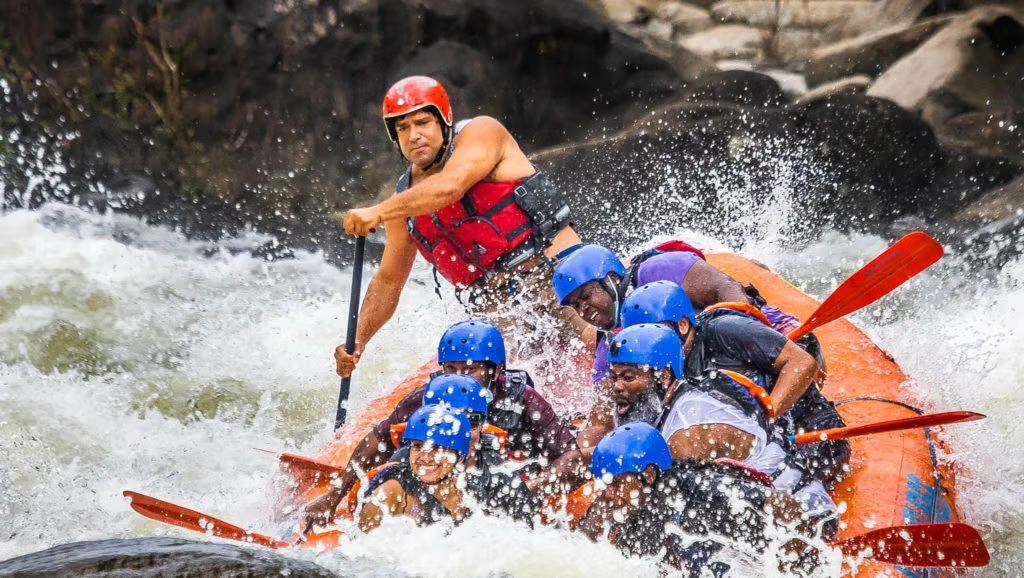Discovering the Thrills of White Water Rafting in West Virginia
Discovering the Thrills of White Water Rafting in West Virginia

Adventure tourism is a growing trend that attracts thrill-seekers from around the globe, and white water rafting stands out as one of the most exhilarating activities one can experience. If you’re someone who loves the great outdoors and is drawn to the rush of adrenaline, then embarking on a white water rafting adventure in West Virginia might be the perfect getaway for you. Let’s explore what makes white water rafting in this region an unforgettable experience.
White Water Rafting: A Blend of Excitement and Scenery
White water rafting involves navigating rivers with various degrees of rough water, known as rapids, in a raft. This activity is not just about the thrill of maneuvering through the water, but also about embracing the beauty of nature. West Virginia, with its lush landscapes and rugged terrains, offers some of the most picturesque and challenging rafting experiences in the United States.
The state is home to several rivers, including the famous Gauley and New Rivers, which are renowned for their exhilarating rapids. These rivers challenge rafters with a mix of high-speed currents, rocky outcrops, and dramatic drops. The intensity of the rapids varies, making it suitable for both beginners and seasoned rafters. This variability ensures that everyone, regardless of their experience level, can find a route that suits their thrill threshold and skill set.
Safety and Preparation
While white water rafting is an adventure sport filled with excitement, it is also an activity that requires proper preparation and respect for safety protocols. Before hitting the rapids, participants are typically given a safety briefing by experienced guides. These guides are not only trained to navigate the rivers safely but are also equipped to handle emergencies and provide first aid if necessary.
It’s important for rafters to wear appropriate gear, including helmets, life jackets, and suitable clothing that can handle getting wet and drying quickly. Many rafting companies also recommend that non-swimmers and individuals with little to no experience start on less challenging routes before attempting the more vigorous rapids.
The Community and Environmental Impact
White water rafting also plays a significant role in local tourism and economies. It attracts thousands of visitors each year, providing a boost to local businesses in West Virginia. Furthermore, the rafting community is often deeply committed to environmental conservation. Preserving the natural beauty and health of the rivers is crucial, not only for sustaining the sport but also for maintaining the habitat of countless wildlife species.
Many rafting operators work closely with environmental organizations to ensure that the rivers remain clean and vibrant for future generations to enjoy. This includes organizing river clean-ups and advocating for pollution control measures, which helps to keep the rafting experience enjoyable and safe for everyone.
Conclusion
White water rafting in West Virginia offers more than just a burst of adrenaline—it’s an immersive experience that combines adventure, natural beauty, and a deep appreciation for the environment. Whether you’re a seasoned rafter looking for your next big challenge or a newcomer eager to try something different, the rivers of West Virginia offer a spectacular setting to dive into the world of rafting. So, if you’re looking for an adventure that will pump your adrenaline and soothe your soul with stunning views, consider white water rafting in this beautiful region. It’s an experience that promises excitement and memories that will last a lifetime.
White water rafting also plays a significant role in local tourism and economies. It attracts thousands of visitors each year, providing a boost to local businesses in West Virginia. Furthermore, the rafting community is often deeply committed to environmental conservation. Preserving the natural beauty and health of the rivers is crucial, not only for sustaining the sport but also for maintaining the habitat of countless wildlife species.
Many rafting operators work closely with environmental organizations to ensure that the rivers remain clean and vibrant for future generations to enjoy. This includes organizing river clean-ups and advocating for pollution control measures, which helps to keep the rafting experience enjoyable and safe for everyone.



